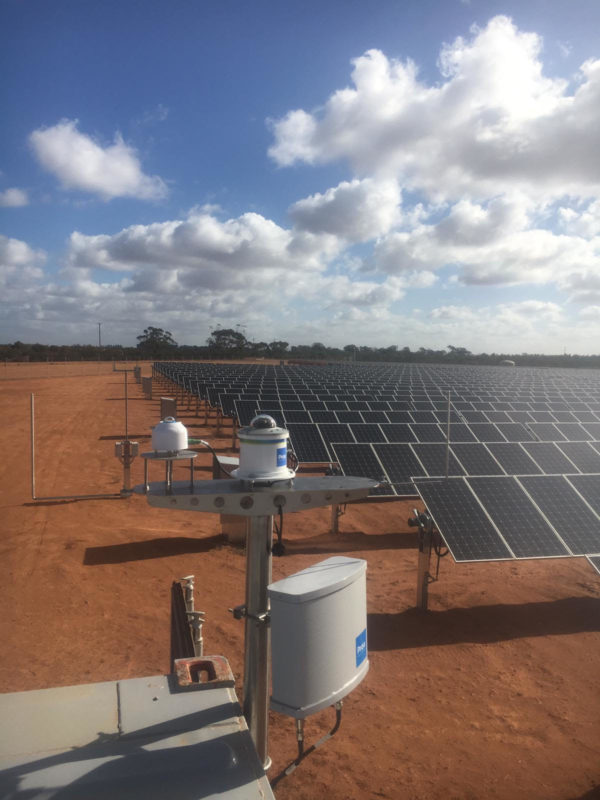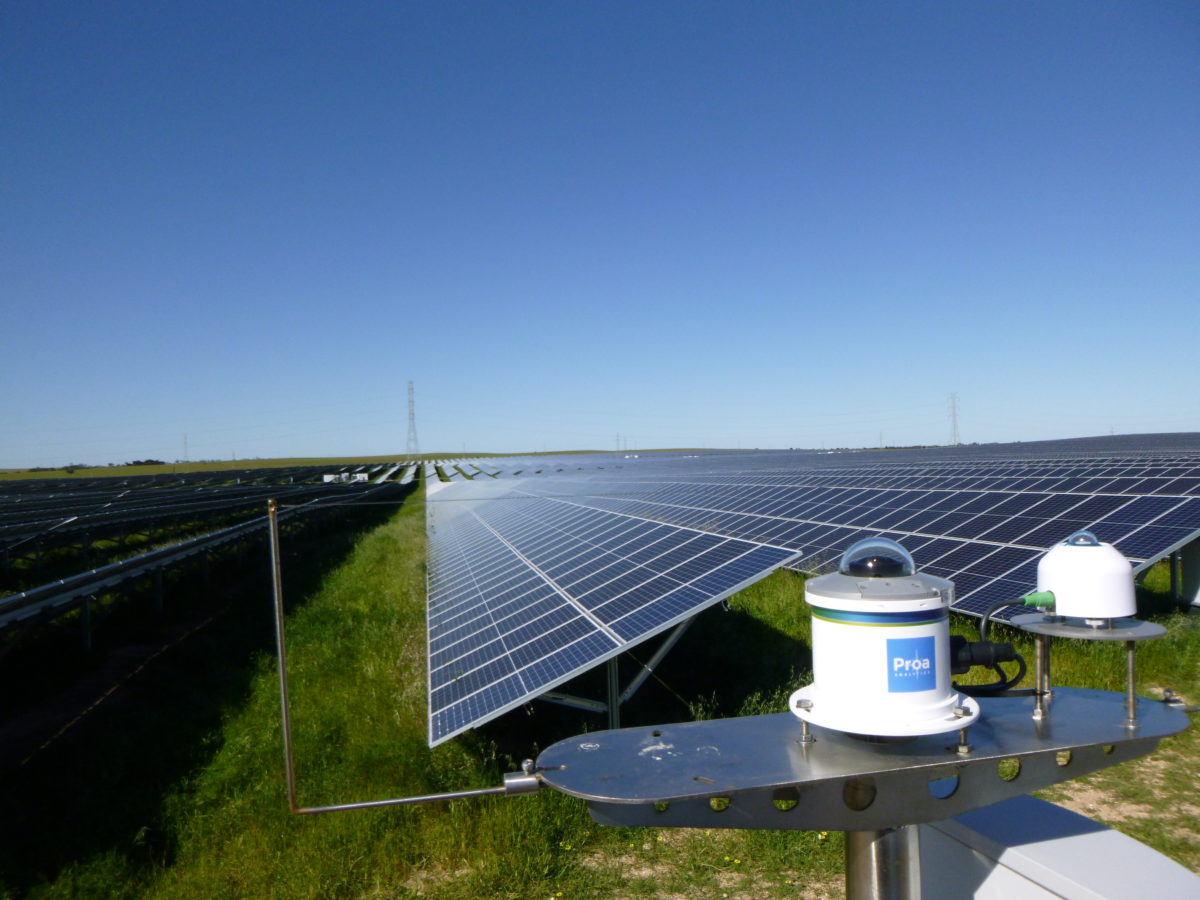Late last week, 50 MW Kidston Solar Project became only the second solar farm in the NEM to be approved for self-forecasting of generation, using technology developed by Proa Analytics — the first of four solar forecasting providers to demonstrate success under funding by Australia’s Renewable Energy Agency (ARENA).
“When a cloud goes over a solar farm, that has an effect on the whole power system. AEMO needs a heads up, batteries or other generators on the grid must be able to compensate for the decrease in generation. Forecasting gives everyone better information and that leads to better decisions,” says Matthew Jeppesen, Managing Director of Proa Analytics.
Currently, the Australian Energy Market Operator runs its own forecasting of renewable energy supply to the grid, which is calculated using a variety of methods.
More accurate self-forecasting will help solar farm owners manage their operations, and reduce the FCAS penalties to solar farm operators when their output doesn’t match AEMO’s forecast generation — such charges can amount to tens of thousands of dollars a week, say the Proa Analytics team.
“By reducing the deviation, the causer-pays factor that determines the charges to each solar farm is reduced, which makes forecasting investible,” Proa’s Technical Director, Victor Depoorter, tells pv magazine.
A visionary investment initiative
In March 2018, AEMO and ARENA agreed to partner in trialling generator self-forecasting technologies, to provide accurate 5-minute-ahead forecasts for energy produced by wind and solar farms from their precise locations, with the aim of facilitating smoother integration of renewable-energy into the grid.
AEMO managing Director and CEO Audrey Zibelman said at the time, “Accurate short-term forecasts are essential for balancing supply and demand, and avoiding grid instability.”
Zibelman added that accurate prediction of demand and output would “reduce the need for additional frequency control services in the future, which the market pays for”.
ARENA subsequently invited expressions of interest in the trial and allocated $9.41 million in funding to a total of 11 providers of forecasting for wind and solar.
Proa Analytics technology — which combines live data forecasts and SkyCam cloud-motion vectoring from the precise location of the solar farm, with satellite images of Australia from Japan’s Himawari-8 meteorological satellite and numerical weather prediction forecasts — received $730,000 in funding.
It is the first of the funded solar forecasters to pass assessment by AEMO for improvements in accuracy over the current forecasting used by its central dispatch engine.
Proa’s forecasting for 95 MW Tailem Bend Solar Farm in South Australia —a project undertaken by the company outside the ARENA initiative — was approved by AEMO in late September.
Verifying an all-weather friend
The ARENA-AEMO trial is funding demonstration of Proa Analytics technology at Kidston Solar Project in Queensland (now approved and providing integrated forecasts); at Bannerton Solar Project near Robinvale in Victoria; and at Canadian Solar’s Oakey Solar Farm Project in south-east Queensland.
The locations of the trial projects will prove Proa’s accuracy over a diversity of geographies: “They will demonstrate our forecasts in all the main climates across the NEM,” says Jeppesen, “ranging from tropical to subtropical and temperate zones.”

Image: Proa Analytics
Depoorter describes Kidston as characterised by its remote location, seven hours inland by car from Townsville where high irradiance levels also contribute to a harsh environment, “which makes reliability of all site equipment extremely important”. The tropical zone experiences mostly dry, clear weather in the winter months, with cloud cover causing increased solar intermittency during summer.
Tailem Bend, on the other hand, is situated in a temperate climate, with mostly clear weather in summer, and “frequent frontal systems rolling over the solar farm from the Southern Ocean in winter”, says Depoorter.
Another significant factor influencing the sites’ generation profiles, he explains, is in the tracking systems used. “Kidston uses single-axis tracking, which makes the generation ramps much steeper in the morning and evening, while Tailem Bend has fixed-tilt arrays.”
Such differences in solar farm situation and systems require that each forecasting installation must be independently assessed and verified by AEMO before the market operator will accept its forecasting into the system.
In total, installation and integration of Proa Analytics’ forecasting into each solar farm, and subsequent assessment and approval by AEMO, takes between two and three months, after which FCAS payments can begin to be assessed on self-forecasting of generation.
Heads up for solar farms in the hours before dawn
Proa Analytics also incorporates night-to-dawn forecasting in its system, based on infrared techniques Depoorter invented and developed as part of his PhD at Melbourne University.
“A solar farm or battery has a lot of decisions to make in the two hours before dawn,” explains Jeppesen.”That’s where nighttime solar forecasts that go into the day are really useful.”
The emergence of solar forecasting, says Jeppesen, is one indication of how the solar industry is maturing “to provide a much better integrated solution for the power system.
“Thanks to AEMO and ARENA, the way solar-cell forecasting can now work in the NEM is world leading.”
The Proa Analytics team looks forward to engaging with the industry at All Energy 2019 in Melbourne on October 23-24.
This content is protected by copyright and may not be reused. If you want to cooperate with us and would like to reuse some of our content, please contact: editors@pv-magazine.com.









4 comments
By submitting this form you agree to pv magazine using your data for the purposes of publishing your comment.
Your personal data will only be disclosed or otherwise transmitted to third parties for the purposes of spam filtering or if this is necessary for technical maintenance of the website. Any other transfer to third parties will not take place unless this is justified on the basis of applicable data protection regulations or if pv magazine is legally obliged to do so.
You may revoke this consent at any time with effect for the future, in which case your personal data will be deleted immediately. Otherwise, your data will be deleted if pv magazine has processed your request or the purpose of data storage is fulfilled.
Further information on data privacy can be found in our Data Protection Policy.